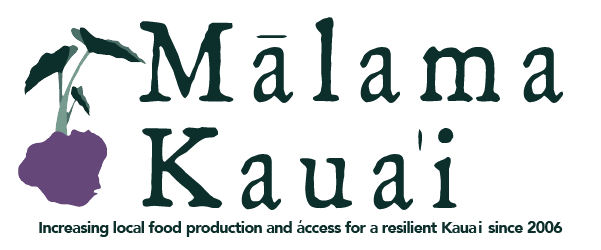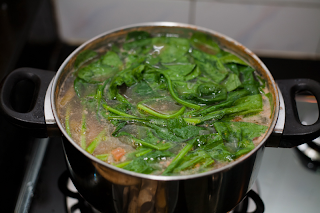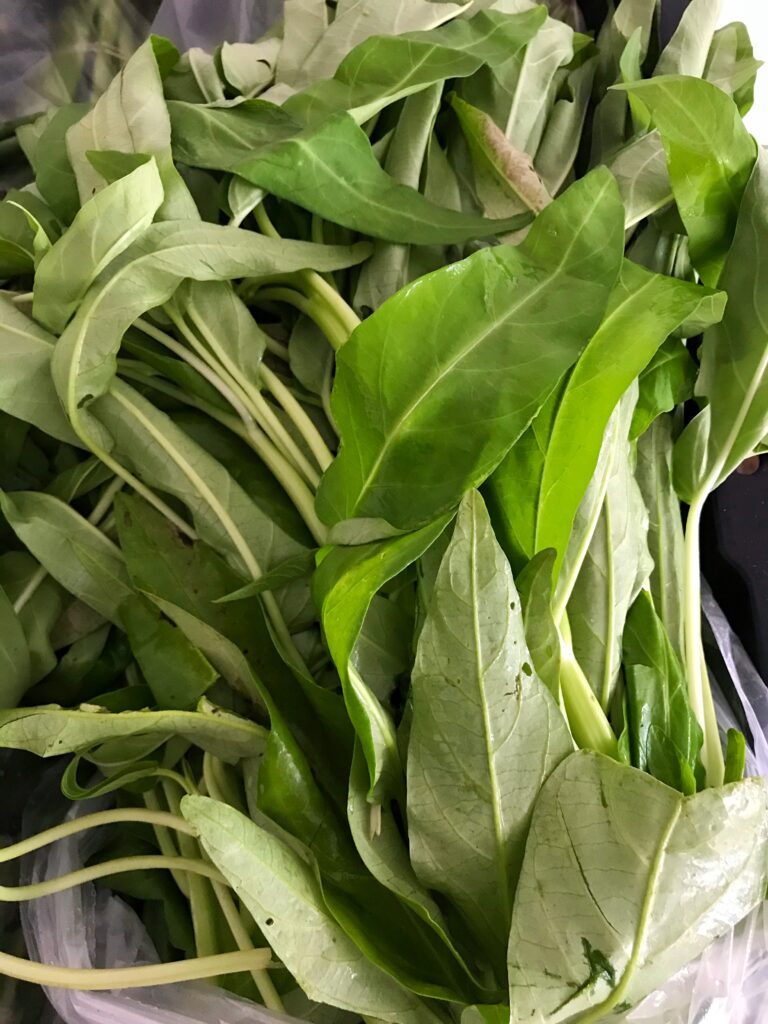Razel Dalofin is a home cook from Waipahu, currently studying at Chaminade University. Before heading off to college, her mother taught her various Filipino dishes including one of her favorites, Sinigang. As an intern assisting our Kaukau 4 Keiki Summer Feeding Program she was happy to share this family recipe utilizing un choy, also known as ong choy, kang kong or water spinach. This plant has tender, mildly sweet leaves with stems that are similar in texture to watercress. It’s a perfect addition to any soup, stir fry, or salad.
Sinigang is a type of sour soup from the Philippines that comes in many variations. It is possible to substitute the vegetables typically used in the Philippines with vegetables local to your area. For simplicity, this recipe is made using the least amount of ingredients while still maximizing flavor and quantity.
Pork and Un Choy Sinigang
Ingredients:
- 2 medium/large tomatoes
- 1 large onion
- 4 lemons
- One bundle of un choy
- 4 cups of water (adjust if needed)
- ½ rack of pork spare ribs (or 1 rack of pork baby back ribs, pork belly, or other cuts with the bones attached)
- Fish sauce
- Salt
- Pepper
Instructions:
- Pour the water into a pot. Turn on the heat for it to boil. Put on the lid. While the water is heating up, prepare the pork.
- Rinse the pork. Pat the pork dry with paper towels, or wait for the pork to dry by putting the pork into a colander. Cut between the bones. Start cutting from the side where you can see the rib bones. From there, continue to slice through the meat and into the cartilage that looks like bone. There are some racks of spare ribs, however, that has cartilage attached to a large piece of bone. Cut through the cartilage attached to that piece of bone. Use this bone for the soup as well.
- Regardless of whether the water is boiling or not, put the pork into the water. The water needs to cover the pork, so adjust the amount of water as needed. Increase the heat of the stove to bring the water up to a boil. Putting the lid on will quicken the process.
- While the water is heating up, cut both the onion and tomatoes into quarters.
- When steam starts wafting out, there will be various dark spots floating around called impurities. Remove the impurities. This process is called skimming. Lower the heat so that the water will not boil, but will still cause steam to waft out. Continue to skim the surface every three minutes or so.
- When there is nothing left to skim, put in the onion and tomatoes. Add two tablespoons of salt. Turn the heat up to a boil. When the water starts boiling, lower the heat so that the water will simmer.
- The pork will need to simmer for at least 30 minutes until it is tender. To test whether it is tender enough to your liking, simply pull off a piece of meat from the bone and eat it. If you cannot pull off a piece with a fork, then it is not tender and will need to simmer for longer.
- While the pork is simmering, prepare the un choy and lemons. Squeeze the juice from the lemon. Set it aside.
- Use your hands instead of a knife to prepare the unchoy. Remove and throw away your thumb’s length off of the bottom. Pinch off the large leaves. Then pinch off the thin stalks that are proportionate to your liking. Bite-size pieces are the best. For the long, thick stalk that is left, grab one end with the palm of your hand then twist and rip off proportionate to your liking.
- When the pork is tender, put it in the un choy. Mix it into the soup, then put it on the lid. Turn off the heat. When the un choy has wilted, add in the lemon. Use two ladles of fish sauce, or adjust to your taste. Despite fish sauce having a funky odor, it gives a nice savoriness. Add salt and pepper to your taste. Serve with rice.
Notes:
If you plan on reheating the sinigang, the sourness from the lemons will not be as upfront, so you will once again need to add in lemon. Do not reheat it too much, since lemons will turn bitter the longer you cook it.
You can also substitute pork with shrimp or fish. The un choy can be substituted or can be added with vegetables suitable for soups/stews, such as eggplant, okra, and daikon.
Share your own Kaukau 4 Keiki inspired recipe and be entered into our weekly recipe contest!
Details here.



